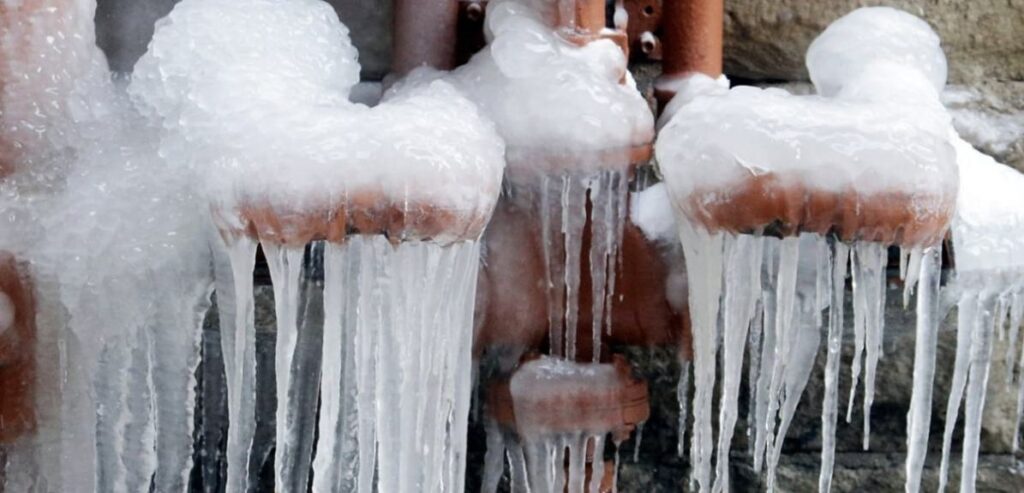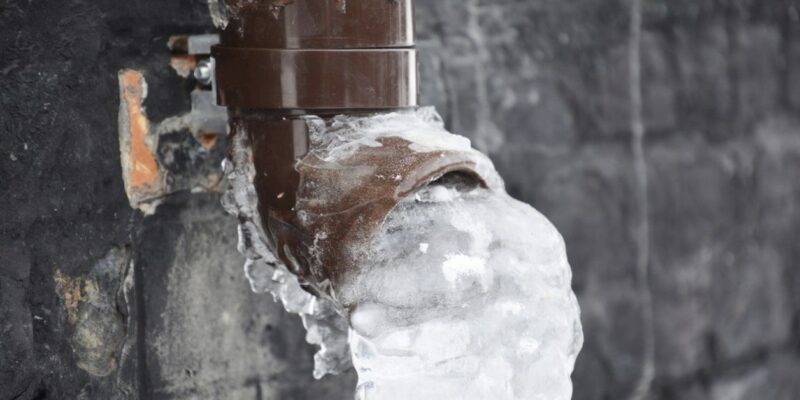In winter, frozen pipes can be a homeowner’s nightmare. They stop water flow and might burst if not fixed fast, costing thousands. Knowing what to do can save you money. Burst pipes lead to home damage and flooding. It’s like the saying, “a bit of prevention is better than a lot of fixing.” Let’s learn why pipes freeze in winter and how to stop it.
Why Do Pipes Freeze?
Your water pipes can easily freeze during winter, catching many homeowners off guard. It’s a big problem when it happens, leaving your plumbing useless or, worse, causing floods. Here’s why it’s more likely to happen:
- Temperatures below 20 degrees– Even though water freezes at 32°F, your pipes are safe until it drops below 20°F. Most freezing occurs when it’s this cold or colder.
- Unheated Interior Spaces– Places like your attic, crawlspace, or basement might have pipes, but if they’re not heated, they’re at risk. These are where bursts happen most often.
- Pipes in exterior walls– Pipes along the outer walls of your house face the brunt of the cold. If the walls lack insulation or have cracks, it’s even riskier.
- Insufficient Insulation – If your walls, attic, or crawlspace lack proper insulation, your pipes are more likely to freeze.
- Drafty Areas– Wind can make it feel colder than it is, especially in places like the attic or crawlspace. Drafts make freezing more likely.

How to Prevent Your Pipes From Freezing
Your water pipes can easily freeze during winter, Preparing your home for winter can greatly lower the risk of frozen pipes. Here’s what you can do:
- Seal cracks on exterior walls. Look for cracks on outside walls, especially where cables enter. Seal them up tight.
- Insulate unheated spaces. If your attic or crawlspace lacks insulation, adding some can protect your pipes.
- Open the cabinets under the sink. Let warm air reach your pipes by opening cabinet doors under sinks.
- Wrap Pipes. Cover exposed pipes with heating tape or insulation to keep them warm.
- Keep the house warm – Leave your thermostat at 55 degrees if you are going to be away.
- Open your faucets If it’s going to be very cold, leave faucets slightly open to keep water flowing.
How to Thaw Frozen Pipes
You can spot frozen pipes by checking for signs like frost, condensation, or strange smells from your sink. When water lines freeze, you might lose water during very cold weather. Here’s how to thaw them:
- Turn off the main water line.
- Open faucets to relieve pressure in the pipes.
- Use a space heater or hair dryer pointed at the frozen pipe, starting from the faucets and moving towards the main shutoff valve.
If the pipes stay frozen or start leaking, it’s time to call a plumber for help.

What to Do if Your Fingers or Toes Freeze?
If your faucets won’t give any water during freezing temperatures, you might have a frozen pipe. Acting fast can prevent it from bursting and causing damage. Here’s what to do:
- Turn off the water Find your main water valve and shut it off. If you’re not sure where it is, call your utility provider’s emergency number for help.
- Find the frozen pipe. Check places like basements, crawlspaces, attics, exterior walls, or under sinks. Look for frost around the pipe.
- Open faucets that are connected to the pipe. This relieves pressure on unfrozen parts of the pipe.
- Check the pipes for leaks– If you find a crack or burst pipe, call a plumber immediately.
- Try to Thaw If you can easily access the frozen pipe, use a space heater or hair dryer to thaw it. Avoid open flames.
Call a Qualified Plumber for Frozen Pipe Repair
It’s wise to call a plumber in this situation. They have the right tools to safely thaw pipes and can spot any hidden damage. Even if a pipe looks okay, there could be cracks or weak spots that could leak once thawed. The pressure from ice might have weakened the pipe, even if it didn’t burst. So, it’s important to have a plumber like those from Clong Kings check pipes that have frozen to make sure they’re safe.


